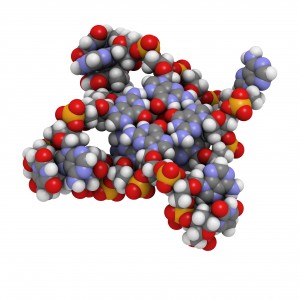Familial Pulmonary Fibrosis: A Link to Telomerase

 Pulmonary fibrosis may run in the family, based on the frequent occurrence of this disorder in people who are related, according to an article titled Familial Pulmonary Fibrosis recently published in Revue des Maladies Respiratoires by a group from the Centre de Compétence Maladies Rares Pulmonaires, Hôpital Bichatin, Paris, France.
Pulmonary fibrosis may run in the family, based on the frequent occurrence of this disorder in people who are related, according to an article titled Familial Pulmonary Fibrosis recently published in Revue des Maladies Respiratoires by a group from the Centre de Compétence Maladies Rares Pulmonaires, Hôpital Bichatin, Paris, France.
Pulmonary fibrosis is a progressive lung disease. Once diagnosed, individuals with people live, on average, between 2-4 years. The disease is characterized by thick, scarred tissue of the lungs, causing difficulty breathing. In spite of the recent FDA approvals of Ebriet and Ofev in October, there is no cure, few medications currently exist to treat it, and lung transplant is often the only viable option. Identifying genetic causes could provide targets for medications.
Genetic evidence indeed supports the family link. In the last 10 years, scientists have discovered genetic mutations involving proteins from the telomerase complex and also from the surfactant system in association with pulmonary fibrosis. Telomerase, is an enzyme found in cells, and has been implicated in cancer. It allows “reverse transcription” which is the backwards coding of RNA to DNA (normally DNA codes RNA). It may protect cells from cancer and aging by preventing the shortening of structures known as telomeres (shown in the picture here). Surfactants coat the lungs and help the lung’s ability to stretch and expand, prevent the accumulation of fluids, keep airways dry and act to aid the immune system of the lungs.
[adrotate group=”3″]
Mutations of the gene for telomerase reverse transcriptase, are found in 15% of cases of familial pulmonary fibrosis — the most frequently identified gene mutation. Other mutations known as TERC, and those for surfactant proteins genes are also associated with pulmonary fibrosis, but they are much more rare. According to the authors, “Patients with mutations involving the telomerase complex may present with pulmonary fibrosis, hematologic, cutaneous or liver diseases. Other genetic variations associated with pulmonary fibrosis such as a polymorphism in the promoter of MUC5B or a polymorphism in TERT have been recently described, and could be considered to be part of a polygenic transmission.”
Identifying genes associated with pulmonary fibrosis could have numerous benefits. The authors stated “Evidence for mutations associated with the development of pulmonary fibrosis raises numerous clinical questions from establishing a diagnosis, providing counselling to deciding on therapy, and requires specific studies. From a pathophysiological point of view, the function of the genes highlights the central role of alveolar epithelium and aging in fibrogenesis.”
Ultimately, genetic mutations may assist in directing which treatments to use for pulmonary fibrosis, as more treatments become available.







